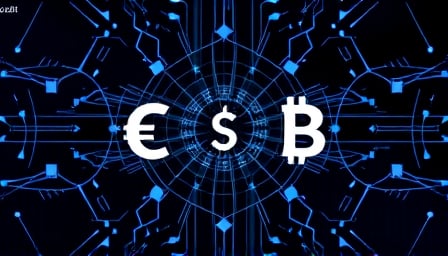In the ever-evolving landscape of cryptocurrency, the stability and reliability of stablecoins have become a focal point for investors and regulators alike. Among these, the Binance USD (BUSD) stands out as a prominent player, yet recent developments and fundamental data raise critical questions about its future trajectory and underlying stability.
As of September 12, 2025, BUSD’s close price hovers at a near-perfect parity with the US dollar, recorded at 1.00026. This figure, while seemingly stable, masks the volatility and challenges that have characterized its performance over the past year. The 52-week high of 1.02319, achieved on February 20, 2025, contrasts sharply with the 52-week low of 0.996347, observed on August 12, 2025. This fluctuation, albeit within a narrow band, underscores the inherent instability and the pressures faced by BUSD in maintaining its peg to the US dollar.
The market capitalization of BUSD, standing at approximately 55.04 million USD, further illuminates the scale and impact of these fluctuations. While not monumental in the grand scheme of the cryptocurrency market, this figure is significant for a stablecoin, which is expected to offer a haven of stability amidst the tumultuous crypto market. The question then arises: can BUSD truly fulfill its promise of stability, or is it merely a mirage in the desert of digital currencies?
Critics argue that the very nature of stablecoins, including BUSD, is fraught with challenges. The reliance on a single fiat currency, in this case, the US dollar, exposes these digital assets to the whims of monetary policy and economic fluctuations. Furthermore, the mechanisms employed to maintain the peg, often involving complex financial instruments and reserves, are opaque and subject to scrutiny. The recent fluctuations in BUSD’s value, though minor, are a testament to the fragility of this balance.
Moreover, the regulatory landscape for stablecoins is becoming increasingly stringent, with authorities worldwide demanding greater transparency and oversight. BUSD, like its counterparts, finds itself at the crossroads of innovation and regulation. The ability of Binance, the issuer of BUSD, to navigate this complex regulatory environment while maintaining the trust of its users and investors will be crucial in determining the future of BUSD.
In conclusion, while BUSD has demonstrated a remarkable ability to maintain its peg to the US dollar, the challenges it faces are multifaceted and significant. The narrow fluctuations in its value, the scrutiny of its reserve management practices, and the evolving regulatory landscape are all factors that could impact its stability and reliability. As the cryptocurrency market continues to mature, the role of stablecoins like BUSD will undoubtedly be pivotal. However, whether they can live up to their promise of stability remains an open question, one that will require careful observation and analysis in the months and years to come.
